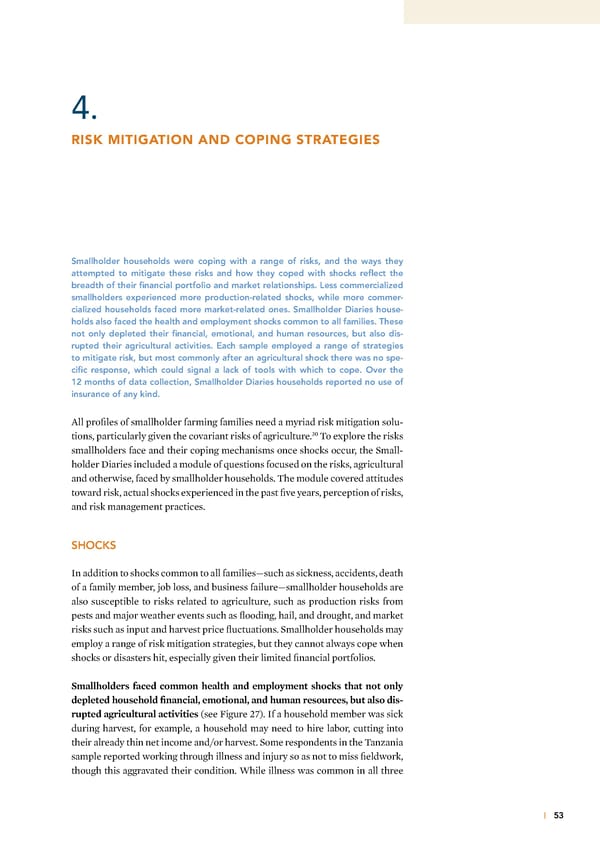CASE 3, continued 4. RISK MITIGATION AND COPING STRATEGIES Smallholder households were coping with a range of risks, and the ways they attempted to mitigate these risks and how they coped with shocks reflect the breadth of their financial portfolio and market relationships. Less commercialized smallholders experienced more production-related shocks, while more commer- cialized households faced more market-related ones. Smallholder Diaries house- holds also faced the health and employment shocks common to all families. These not only depleted their financial, emotional, and human resources, but also dis- rupted their agricultural activities. Each sample employed a range of strategies to mitigate risk, but most commonly after an agricultural shock there was no spe- cific response, which could signal a lack of tools with which to cope. Over the 12 months of data collection, Smallholder Diaries households reported no use of insurance of any kind. ˆll profiles of smallholder farming families need a myriad ris mitigation solu- Ÿ’ tions, particularly given the covariant riss of agriculture Œo explore the riss smallholders face and their coping mechanisms once shocs occur, the Small- holder ‰iaries included a module of uestions focused on the riss, agricultural and otherwise, faced by smallholder households Œhe module covered attitudes toward ris, actual shocs experienced in the past five years, perception of riss, and ris management practices SHOCKS €n addition to shocs common to all families—such as sicness, accidents, death of a family member, „ob loss, and business failure—smallholder households are also susceptible to riss related to agriculture, such as production riss from pests and ma„or weather events such as flooding, hail, and drought, and maret riss such as input and harvest price fluctuations Smallholder households may employ a range of ris mitigation strategies, but they cannot always cope when shocs or disasters hit, especially given their limited financial portfolios Smallholders faced common health and employment shocƒs that not only depleted household financial, emotional, and human resources, but also dis- rupted agricultural actiities (see igure ‘•) €f a household member was sic during harvest, for example, a household may need to hire labor, cutting into their already thin net income and¤or harvest Some respondents in the Œan—ania sample reported woring through illness and in„ury so as not to miss fieldwor, though this aggravated their condition ™hile illness was common in all three | 53
 Financial Diaries with Smallholder Families Page 68 Page 70
Financial Diaries with Smallholder Families Page 68 Page 70